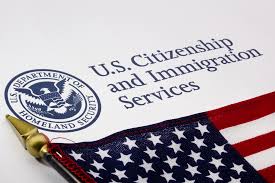09 Jan The E-1 Visa – “The Forgotten Visa”
There has been much discussion about the well-known E-2 Investment Visa, but as we know this is not the only way to gain entry into the U.S. Additionally, to qualify for an E-2, not only is a “substantial investment” required, but the applicant must also be from a country with which the U.S. has a bilateral investment treaty, which significantly limits the availability of this option. There are many other visa options depending on various qualifications, including but not limited to the applicable foreign country.
The E-category visas were created with the purpose of encouraging economic interaction between the U.S. and the countries with which the treaties have been bilaterally ratified. To this end, some countries which do not qualify for an E-2 Treaty Investor visa DO qualify for the too often overlooked E-1 Treaty Trader Visa option.
The E-1 Visa does not require a substantial investment as does the E-2 Visa, and indeed does not require any investment at all, but instead DOES require proof of substantial trade between the U.S. and the treaty country through the applicant’s business.
Generally, to qualify for an E-1 visa, the treaty trader applicant must:
- Be a national of a country with which the U.S. maintains a treaty of commerce and navigation; and
- Carry on substantial and principal trade between the U.S. and the treaty country.[1]
When reviewing these basic qualifications, the first question is: What is considered trade? According to 8 CFR 214.2(e)(9), trade includes:
goods, services, international banking, insurance, monies, transportation, communications, data processing, advertising, accounting, design and engineering, management consulting, tourism, technology and its transfer, and some news-gathering activities. … Goods are tangible commodities or merchandise having extrinsic value. Further, as used in this paragraph, services are legitimate economic activities which provide other than tangible goods.[2]
Additionally, it is important to understand that if the trade is in the form of services, it is often challenging to prove such services and their tangible value to qualify as “substantial trade” so as to qualify for the E-1 visa. Specifically, the trade must be meaningful according to INA 101(a)(15)(E)(i). That is, a deposit into a bank account located in the treaty country as a result of a service rendered does not necessarily prove meaningful trade unless the deposit can be shown to support true business activity in the treaty country. Accordingly, the applicant must be prepared to provide as much evidence as possible to prove trade in services, in addition to bank statements, such as copies of contracts, transaction statements, reports, and any other relevant documentation. Remember, the burden of proof will be on the applicant.
Moreover, we need to look at what constitutes “substantial” trade. The word “substantial” means that the trade must be a “continuous flow that should involve numerous transactions over time.”[3] It is also noted in the Foreign Affairs manual that the trader should focus both on the volume and the value of the trade.[4] Additionally, that more weight will be afforded to the cases that involve more transactions of higher value.[5] However, the manual also indicates that the small businessman should not be excluded. Specifically, in this situation (s)he would have to show a “pattern of transactions of value,”[6] which would include “proof of numerous transactions, although each may be relatively small in value, might establish the requisite continuing course of international trade. Income derived from the international trade which is sufficient to support the treaty trader and family should be considered favorably when assessing the substantiality of trade in a particular case.”[7] This reveals that the small business person is not excluded from obtaining an E-1 Visa and that it would be even more important to have the necessary professionals’ advice on what should be included in the application.
The next question is what is considered “principal” trade? According to 8 CFR 214.2(e)(11), this threshold is met when “…over 50% of the total volume of international trade is between the U.S. and the trader’s treaty country.”
Another issue that we need to consider is the list of bilateral trade treaty countries, which can be found at the following link: http://travel.state.gov/content/visas/english/fees/treaty.html.[8] It is important to note that the treaty for an E-1 Visa may differ from an E-2 Visa. For example, to date, Israel does not have a treaty with the U.S. for an E-2 Visa classification; however, an E-1 Visa can be obtained by an Israeli national.
In conclusion, it is critical to understand the necessary qualifications in order to fulfill the requirements for any visa to enter the U.S. These requisites are not easy to comprehend and include layers of legal requirements. Thus, it is essential to hire a team of professionals that can provide the necessary advice to be successful in securing a U.S. visa in the E category.
To find out about professional, comprehensive Business Plans, whether for E-1, E-2, or any other business-related Visa, as well as a variety of complementary services designed to specifically address USCIS’s requirements, contact e-Council Inc.com at info@ecouncilinc.com.
e-Council Inc.com’s website, newsletter and other forms of communication contain general information about legal matters. The information is not legal advice, and should not be treated as such. You must not rely on the information on this website as an alternative to legal advice from your attorney or other professional legal services provider. If you have any specific questions about any legal matter you should consult your attorney or other professional legal services provider.
[1] http://www.uscis.gov/working-united-states/temporary-workers/e-1-treaty-traders
[2] http://www.law.cornell.edu/cfr/text/8/214.2
[3] http://www.state.gov/documents/organization/87220.pdf
[4] http://www.state.gov/documents/organization/87220.pdf
[5] Id
[6] Id
[7] Id
[8] http://travel.state.gov/content/visas/english/fees/treaty.html

